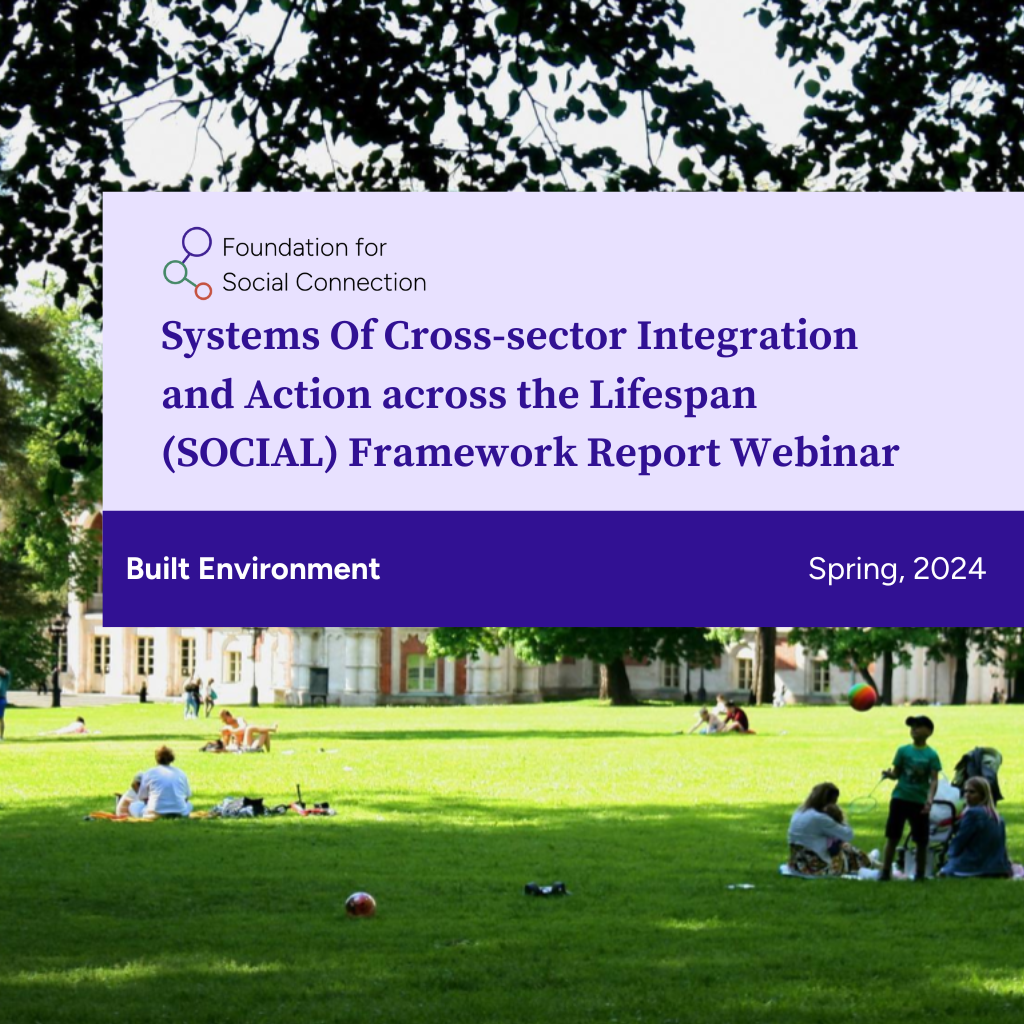

The built environment is made up of the physical spaces we inhabit – from the places we live to the places we learn, play, and work. From the infrastructure that powers our communities with water and electricity to the transportation systems we use to get from place to place. Whether as architects, city planners, local leaders, or engaged citizens, each one of us plays a role in shaping our shared environment and facilitating spaces that connect and foster belonging.
Our report – The SOCIAL Framework in The Built Environment – explores how local leaders, policymakers, and organizational change-makers can foster connectedness through the design, planning, and facilitation of the built environment.
We have developed these reports to be living documents, constantly adapting to new research and policy updates. As such, we welcome your feedback on the report!
Describe and understand the power of the built environment as an interconnected system of physical spaces and attributes which create networks of our cities, communities, and nations – from the street we live on, to the placement of a park, or gathering space.
Identify how the design, planning, policy, and use of the built environment can negatively or positively influence our ability to be socially connected.
Share promising strategies for increasing social connectedness through the design, planning, policy, and use of built environments across levels of influence for various stakeholders.
This report uses the SOCIAL Framework to highlight opportunities for tackling social isolation, loneliness, and promoting social connection (SILC) across various levels of influence within the built environment, including transportation, housing, and environmental sectors. Additionally, it addresses overarching themes and collaboration opportunities. Consideration of these four components ensures a more systematic and effective approach to population health and demonstrates the interconnected nature of the built environment.
This report emphasizes the necessity of cross-sector collaboration in the planning, design, and policy-making processes to foster social connectedness and enhance community well-being through the built environment. It is a call to action for policymakers, urban planners, and community leaders to leverage innovative strategies for creating more inclusive, connected, and healthy environments.

The Built Environment is comprised of the housing, transportation, and environmental sectors. Dive deeper into the individual sectors with our supplemental briefs.
To celebrate the release of our report and supplemental briefs, we hosted two engaging webinars featuring key staff as well as expert researchers and practitioners who played a pivotal role in contributing to this work. Together, we shared our insights on practical applications of these strategies, discussed successful community examples, and identified key research gaps in need of further exploration.
In Part One, we were joined by our report co-chairs to highlight strategies at the intersection of the transportation, housing, and environmental sectors. In Part Two, we dove deeper into strategies from our supplemental briefs and featured a panel discussion between practitioners from each sector.
A brief overview of how the Foundation is putting the Framework into action:
We connect partners from different sectors and levels of influence to support united, multi-sector work.
Through our innovation work, we share evidence-based strategies and learnings with partners who can implement and test approaches shared in the SOCIAL Framework Reports.
Our research informs policy development at our sister organization, The Coalition to End Social Isolation and Loneliness.
If you are designing, implementing, researching, or testing a solution to promote social connection within the built environment sector, we’d love to learn more! We invite you to share what you are doing to advance social connection by contacting us below.